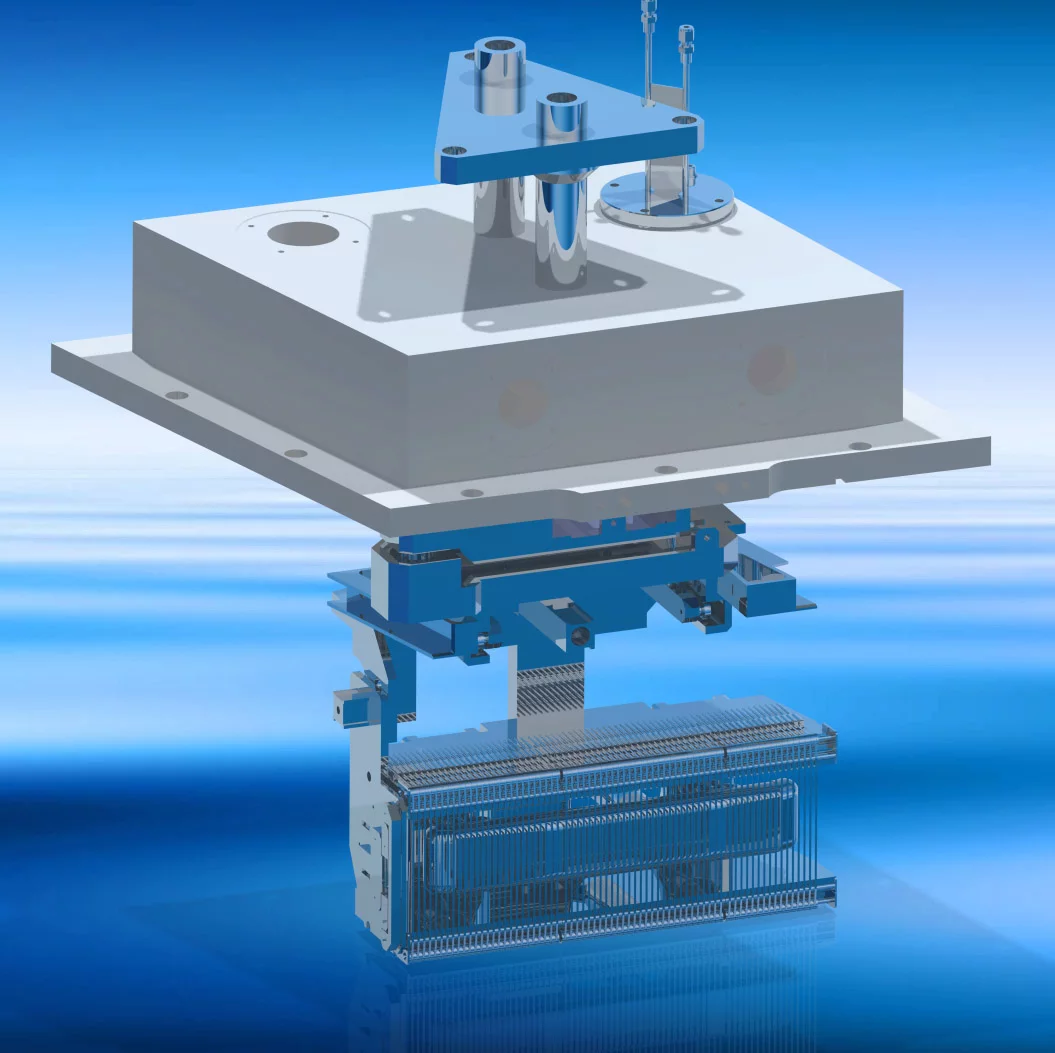Injection and extraction
At PSI, electrostatic elements are used for the precise extraction of protons from cyclotrons. These elements are charged with voltages of up to 150 kV, yielding electric fields that reach a range of 8 to 10 MV/m.
In this setup, the electric field effectively guides the protons as they traverse between the cathode and the grounded electrodes, precisely diverting their trajectory by a subtle 1 to 2-degree angle.
Another electrostatic device, smaller in size, is positioned at the injection radius of 2.1 meters within the Ring cyclotron. This electrostatic injection channel (EIC) deflects the incoming beam, aligning it with the Ring cyclotron's initial circular orbit.
At PSI, electrostatic elements play a pivotal role in the precise extraction of protons from cyclotrons. These elements are charged with voltages of up to 150 kV, creating electric fields with a range of 8 to 10 MV/m.
In this configuration, the electric field effectively controls the trajectory of protons between the cathode and grounded electrodes, inducing a controlled deflection of their path by 1 to 2 degrees.
A smaller electrostatic device is also incorporated at the injection radius of 2.1 meters within the Ring cyclotron. This electrostatic injection channel (EIC) manages the trajectory of the incoming beam to align it with the first circular orbit in the Ring cyclotron.
Beam Splitting
To provide protons for two different experiments at the same time, the main bean extracted from the cyclotron can be split into two parts. To achieve this, electrostatic elements with two cathodes and grounded electrodes inbetween are used.
The incident beam is deliberately directed onto the grounded electrodes, whereas the left and right portions of the beam undergo interaction with an electric field. As a result of this controlled process, the two distinct beam segments undergo spatial separation, enabling each to be directed towards its designated experiment as needed.
This precise targeting of the proton beam onto Tungsten electrodes is achievable due to the remarkable physical attributes of Tungsten, characterized by its notably high melting point of 3422°C. Additionally, the swift velocity of the protons further contributes to this capability. Importantly, the energy deposition of the protons within the Tungsten material remains minimal, thus preventing material melting.
The main application for beam splitting at PSI is the Isotope Production 2 facility (IP2). Up to 100 mA of the beam extracted from the Injector 2 cyclotron can be split off and directed towards the isotope production target.


